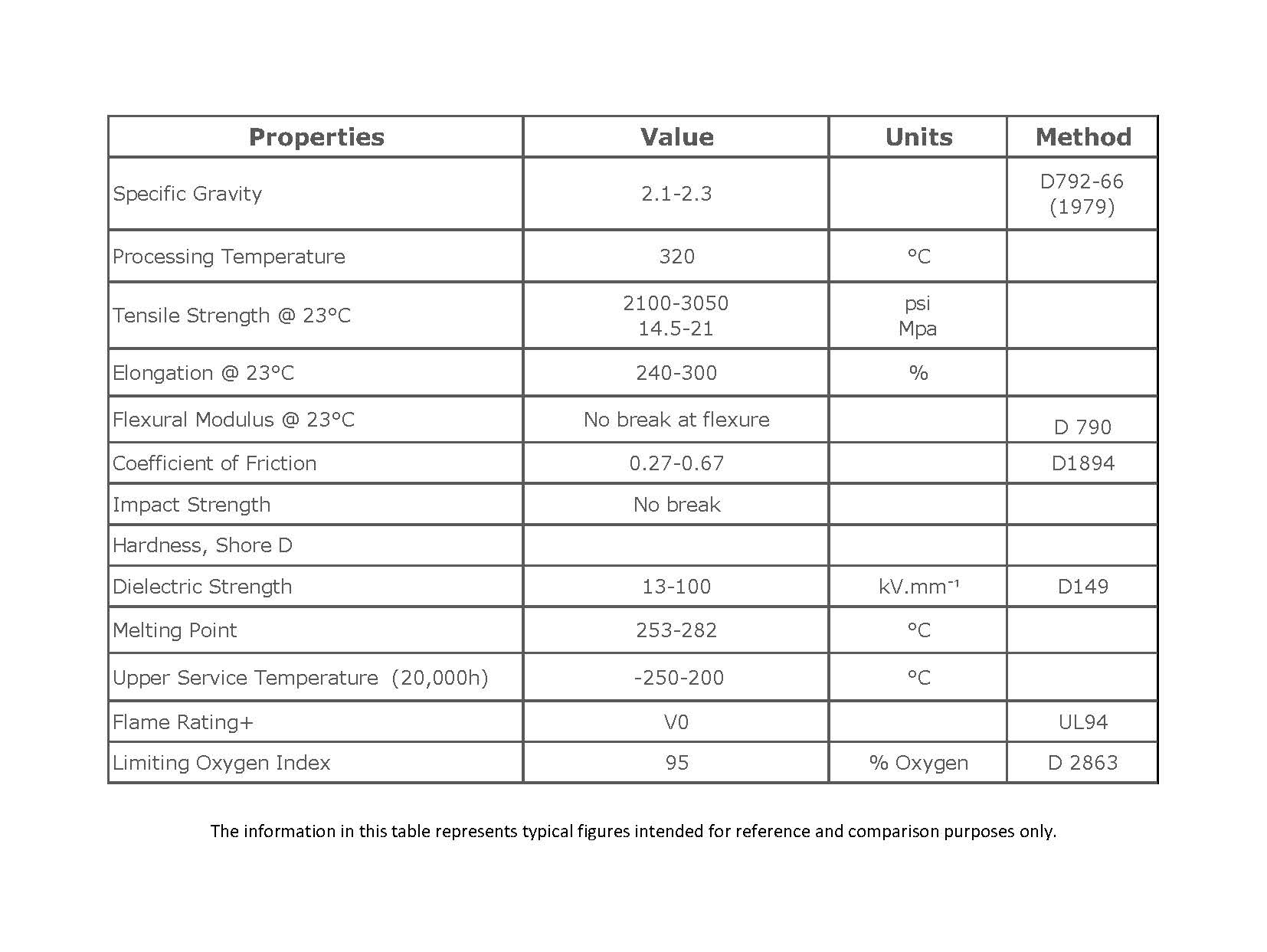What is Fluorinatedethylenepropylene? (FEP)
May 2016

Fluorinatedethylenepropylene- Chemical Compound (FEP)
Fluorinatedethylenepropylene (FEP) is a copolymer of hexafluoropropylene and tetrafluoroetheylene that shares PTFE’s chemical resistance and useful low friction properties, but is more easily formable. FEP was invented by Dupont and developed as a melt processable version of PTFE.
FEP is sold under various brand names, the name ‘Teflon®’ is often mistaken to only refer to the fluoropolymer PTFE, but FEP and PFA also come under this title. FEP is softer, slightly more flexible, but does not withstand repetitive folding as well as PTFE. It also possesses inferior coefficient of dynamic friction and slightly lower tensile strength. Fluorinatedethylenepropylene stands out thermally from PTFE by its lower melting point of 260°C and is highly transparent and resistant to sunlight.
FEP is vastly superior in some coating applications involving exposure to detergents. The main differences between FEP and PTFE are in regards to chemical inertness, corrosion resistance, permeability, and FDA approval.
Being able to maintain chemical composure in extreme temperatures and resist damage from chemical fuels makes FEP a good choice in the Aerospace industry as release film, preventing the curing adhesive (such as carbon fibre) from bonding to the metal tooling.
With flexibility, extreme resistance to chemical attack and optical transparency, FEP is a suitable choice for plastic lab equipment and tubing.

Our Fluorinoid® FL304, virgin FEP is often used in fluid handling applications such as O rings, valves, back up rings and seats.
Key features are:
- Excellent thermal stability
- Chemically inert to almost all chemicals and solvents
- Retains its properties even after prolonged exposures to harsh chemical environments
- FDA approved
- Non-stick quality unsurpassed by any plastic
- High transparency with good transmittance of UV rays and visible rays up to 98%
- Lowest refractive index of all plastics, providing low light reflection
- Refractive index of water, virtually invisible in water
- Non porous
- Excellent resistance to ozone, sunlight and weather
- Inert to body tissue
- Low dielectric constant and high dielectric strength
To find out how we can support your projects contact info@fluorocarbon.co.uk










